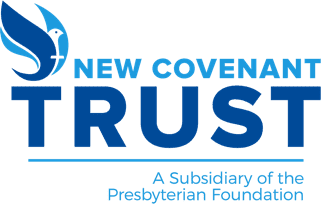It’s hard to believe that 2021 is already past. We have now turned the page and are focused on 2022. Some of us might develop resolutions for the new year. One person mentioned to me recently that they now call them goals, since “resolutions” seem to fall by the wayside within a few days. Hopefully, they said, goals will last longer, maybe even a few weeks!
All joking aside, every organization, company or institution should be in the practice of setting goals. The beginning of the year is a good time to reflect on where we have been, where we are, and where we are going. Not being intentional about our goals can put any organization at risk — without clear goals and a strategy on how to achieve them, we may not do what we are called to do. This requires thoughtful consideration and commitment from all stakeholders.
I would like to share at a high level the process that we at New Covenant Trust Company have used to help us set and accomplish our goals. It’s a fairly simple process that we believe can help any business, church or organization develop a clear strategy for the future that advances the mission and supports their core values.
Defining Mission and Vision
To begin, we review our mission. A mission statement is the enduring purpose or the calling of a business or organization. While its core mission rarely changes, the ways in which an organization advances that mission may change over time.
At NCTC, our mission statement is the foundation of our work as a full-service financial planning, investment management and trust services firm, and we evaluate all our plans and activities against our mission to ensure they are aligned.
Once we have reaffirmed our mission statement, we develop a vision for our firm at the end of a defined period, typically 3 or 5 years. This step is critical as it sets a stake in the ground as to the programs, activities and operations at this future date. It’s the overarching guide for where we want to be.
Developing the vision can be challenging, but it can also be fun. This is a time to think big, and really get creative. One exercise we’ve found to be helpful in defining our vision is writing down what we think our stakeholders and others might say about NCTC at the end of the period — what does the best possible outcome look like to them?
Other questions we consider when crafting our vision include:
- Is it consistent and aligned with our mission?
- Does it stretch, challenge and/or innovate?
- Is it grounded in examples?
- Is it what we want? Will people defend it or get passionate about it?
- Is it stated in affirmative, bold terms and in present tense (as if it were already happening)?
- Is it realistic? Can we deliver it?
Essential Tools for Strategic Planning
Once we’re clear on the current state of our organization and our desired vision for the future, we can develop the plan to achieve that vision, and ultimately arrive at our desired future state. This is commonly called a strategic plan. A strategic plan lays out the plans, goals and timelines necessary to accomplish our vision.
We first want to look at our external environment to see if there are opportunities or risks to consider when formulating our strategic plan. A tool we use to assess outside factors beyond our control is a called a PEST analysis, which stands for Political and Legal, Environmental and Economic, Social and Cultural, and Technology. A PEST analysis examines how each of these key external areas might impact our organization. By looking at the larger ecosystem in which we serve, we can better capitalize on current conditions and prepare for any upcoming shifts.
The next tool is a SWOT analysis, which provides more of an internal look at our organization. SWOT stands for Strengths, Weaknesses, Opportunities and Threats. A SWOT analysis is specific to our mission and vision, and looks at our culture, operational structure and efficiency, brand awareness, and resources and staffing, among other factors.
Creating a Strategic Roadmap
After we’ve taken an in-depth look at all external factors and internal processes, we use our mission, vision, PEST and SWOT to develop our strategic goals. These are high level and identify the strategies necessary to move from where we are now to where we want to be.
Some simple questions we ask ourselves to help identity these goals include:
- What do we do well, and want to continue doing?
- What specifically do we want to achieve that we are not doing?
- What actions or activities do we want to eliminate moving forward?
- What do we want to avoid doing altogether?
Once we identify strategic goals, we create a detailed plan that includes the projects and tasks required to achieve them. It is important to note that there typically are multiple projects for each strategic goal.
When this process is complete, we organize all of this information into a comprehensive strategic plan. Next, we submit the plan to our board for review and approval. Once approved, our plan is then used to the guide our annual plans and budgets.
It’s important to note a strategic plan is not a static document. We suggest reviewing it annually to measure your progress and make any necessary updates.
We hope you find this overview helpful, and we’re happy to provide more information about the strategic planning process or resources to help you get started. Give us a call at 800-858-6127, Ext. 6.
From all of us at NCTC, we wish you joy, peace and good health in 2022.
